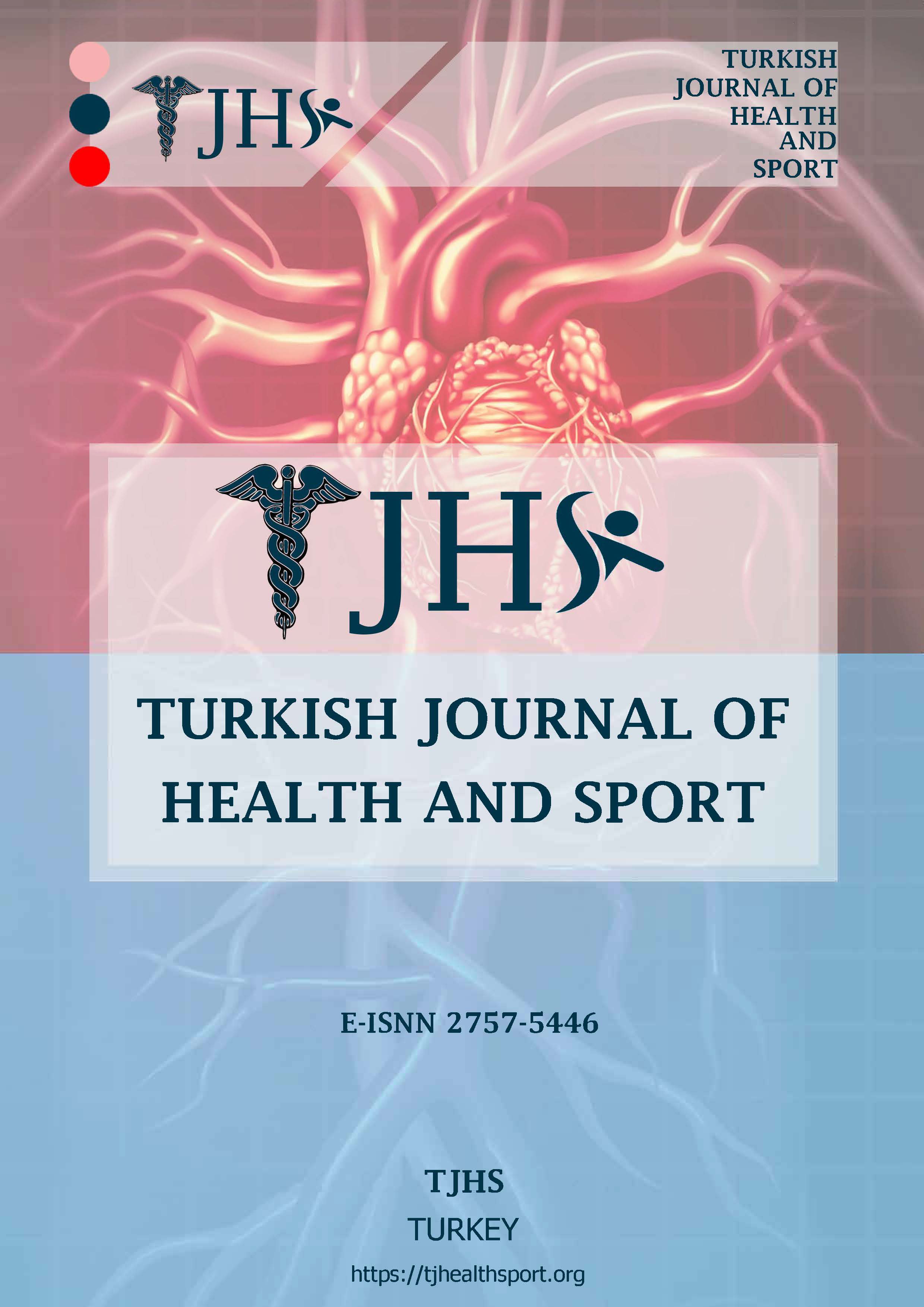ATRİYAL FİBRİLASYON(AF) GÖZLENEN HASTALARIN BİOKİMYASAL VE HEMATOLOJİK PARAMETRELERİNİN DEĞERLENDİRİLMESİ
Author :
Abstract
Giriş ve Amaç: AF (Atrial Fibrilasyon) türlerine eşlik eden komorbiditeleri, laboratuvar parametrelerini ve AF türlerinin tromboembolik ve kanama risklerini karşılaştırdık.
Gereç ve Yöntem: Valvüler-AF'li hastalar hariç tutularak, valvüler olmayan AF'li 200 hasta retrospektif olarak incelendi. Hastalar, AF türüne göre iki gruba ayrıldı; Paroksismal AF (PAF) (grup 1) ve Persistan/Kalıcı AF (PPAF) (grup 2). PAF ve PPAF hastalarına eşlik eden komorbiditeler, laboratuvar parametreleri, inme riskini belirleyen CHADS2 ve CHA2DS2-VASc değerlendirmeleri ve kanama riskini belirleyen HAS-BLED skoru istatistiksel olarak karşılaştırıldı.
Bulgular: Çalışmada yer alan 200 hastanın 144'ü (%72) PPAF, 56'sı (%28) PAF tanısı aldı. Bu hastaların 116'sı (%58) kadın, 84'ü (%42) erkekti. PAF ve PPAF grupları arasında belirgin bir cinsiyet farkı bulunmadı (p>0.05). PAF ve PPAF hastalarının ortalama yaşları sırasıyla 63.9±1 ve 70.5±1 idi ve PAF ve PPAF grupları arasında belirgin bir yaş farkı vardı (p<0.001). PAF grubunun ortalama CHA2DS2-VASc skoru 2.67±1.68, PPAF hastalarınınki ise 3.85±1.63 olup, iki grup arasında belirgin bir fark vardı (p<0.001). İnme, kronik kalp yetmezliği (KKY), 75 yaş üstü olma oranları PPAF hastalarında anlamlı olarak daha yüksekti (p<0.05). PAF grubunun ortalama HAS-BLED skoru 1.32±1.02, PPAF hastalarınınki ise 2.20±1.14 olup, PAF ve PPAF grupları arasında belirgin bir fark vardı (p<0.001). PPAF grubunda oral antikoagülan (varfarin) tedavisi alma oranı ve etkin INR seviyelerine ulaşma sıklığı, daha büyük sol atriyum (LA) çapı, düşük Ejeksiyon Fraksiyonu (EF) anlamlı olarak daha yüksekti (p<0.05).
Sonuç: AF'li çoğu birey iskemik inme riski altındadır. Çalışmamızda, PPAF'li hastaların PAF'li hastalara kıyasla daha ciddi klinik durumlara sahip olduğu ve daha yaşlı olduğu gözlemlendi. Hematolojik ve biyokimyasal değerlendirmeler, PPAF'li hastaların daha kötü sonuçlar verdiğini gösterdi. PPAF'li hastaların, PAF'li hastalara göre hem iskemik inme hem de kanama açısından anlamlı olarak daha yüksek risk skorlarına sahip olduğu kaydedildi.
Keywords
Abstract
Introduction and Objective:We compared the comorbidities accompanying the types of AF, laboratory parameters, and the thromboembolic and bleeding risks of AF types.
Material and Method: Excluding patients with valvular-AF, 200 patients with non-valvular-AF were retrospectively examined. The patients were separated into two groups by the type of AF; Paroxysmal AF (PAF) (group 1) and Persistent/Permanent AF (PPAF) (group 2). The comorbidities accompanying PAF and PPAF patients, laboratory parameters, the CHADS2 and CHA2DS2-VASc evaluation determining the risk of stroke, and the HAS-BLED score determining the risk of bleeding were statistically compared
Findings:Among the 200 patients in the study, 144 (72%) were diagnosed with PPAF and 56 (28%) with PAF. These patients, 116 (58%) were female and 84 (42%) were male. There was no notable gender disparity among the PAF and PPAF groups (p>0.05).
Respectively,the mean age of patients with PAF and PPAF were63.9±1 and 70.5±1, with a markeddisparity amongPAF and PPAF groups (p<0.001). The mean CHA2DS2-VASc score for PAF group was 2.67±1.68, and for patients with PPAF, it was 3.85±1.63, with a notabledisparityamong the two groups (p<0.001). The rates of Stroke, chronic heart failure(CHF), Age>75 years were markedly higher in the PPAF patients (p<0.05).
The average HAS-BLED score for PAF group was 1.32±1.02, and for patients with PPAF, it was 2.20±1.14, with a markeddisparity among PAF and PPAF groups (p<0.001)
In the PPAF group, the rate of receiving oral anticoagulant (warfarin) treatment and the frequency of reaching effective INR levels, larger left atrium (LA) diameter, low Ejection Fraction (EF) were meaningful higher (p<0.05).
Conclusion:Most individuals with AF are at elevated risk of an ischemic stroke. In our study, it was observed that patients with PPAF had more severe clinical conditions and were older compared to patients with PAF in terms of accompanying comorbidities. Hematological and biochemical evaluations showed that patients with PPAF had worse outcomes. It was noted that patients with PPAF had significantly higher risk scores for both ischemic stroke and bleeding compared to patients with PAF.





